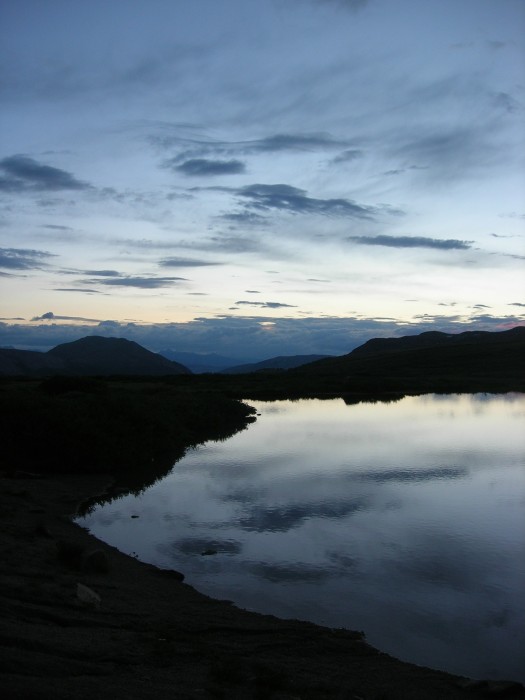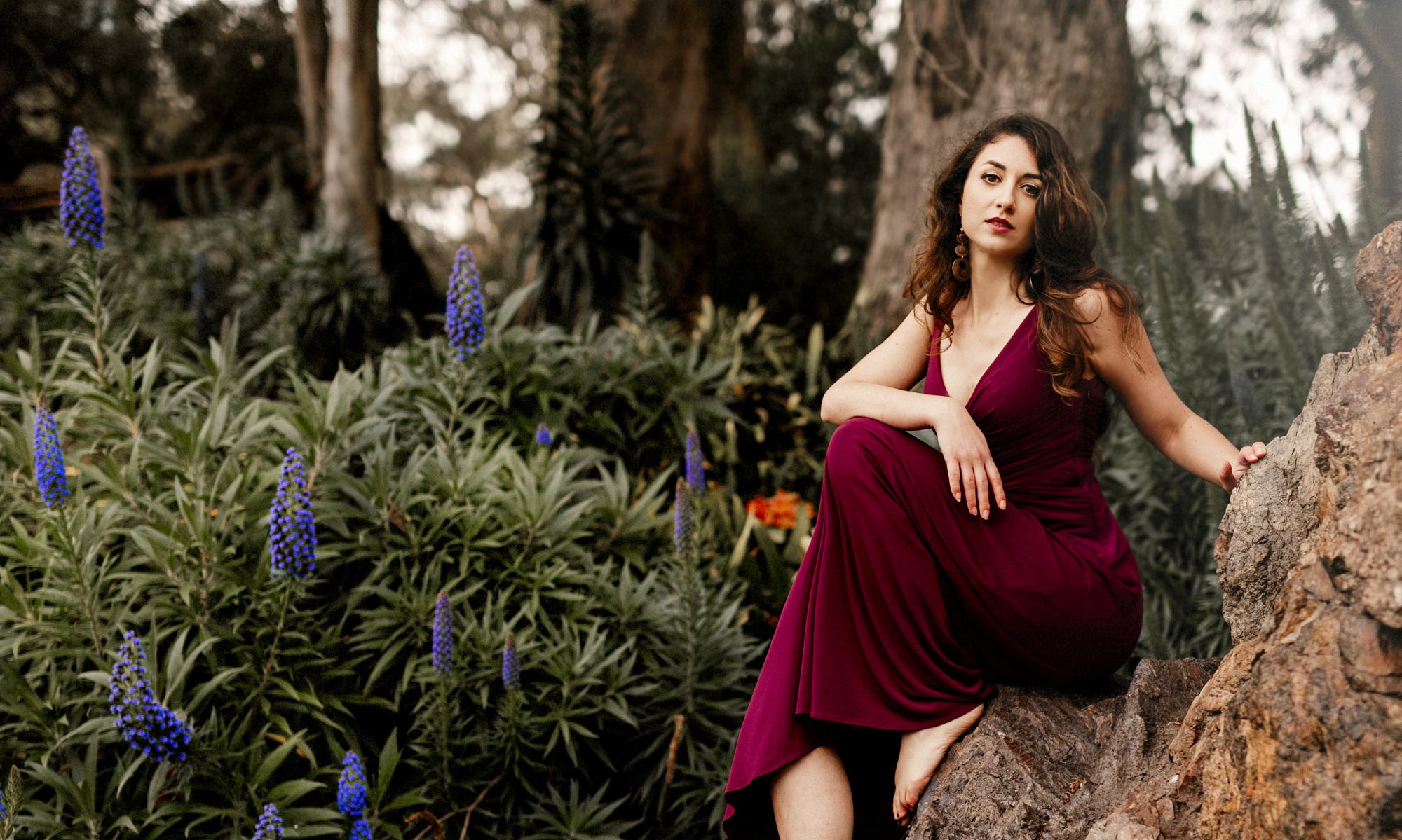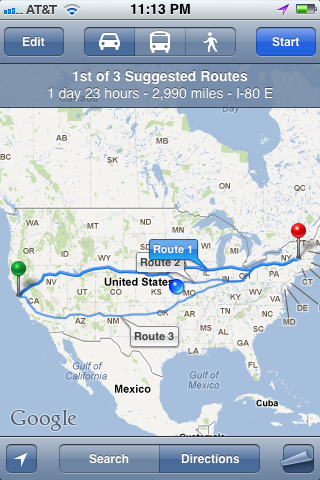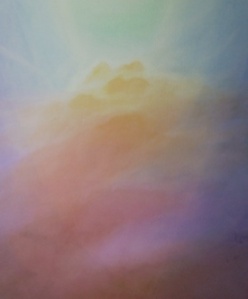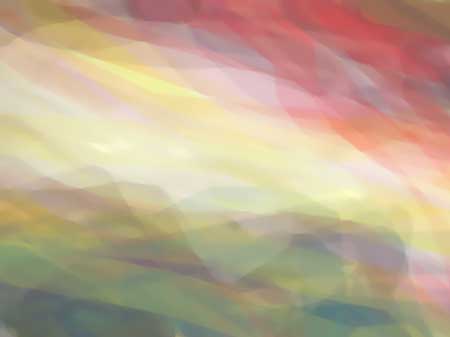One thousand, four hundred miles in two days, from the rolling wooded hills of Ohio, through the dry tabletop flatland of Kansas, deep into the rapid ascent of the Colorado Rocky Mountains. Matt has been a heroic driver. And because of the exhaustion of such an expedition, we have decided to spend an extra day in the idyllic beauty of Aspen, enjoying the sight of high green and red mountaintops, fluttering aspen leaves, and glittering hummingbirds feeding outside the window.
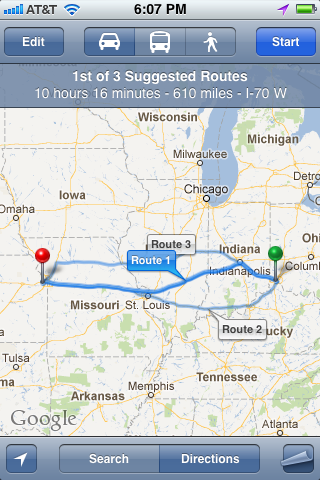 The much-needed rain began to descend as we departed Cincinnati Saturday morning, and we were met with a sudden downpour and pools of water on the poorly constructed Ohio highways. Traffic slowed immediately to a crawl as we appeared to be going through a car wash machine without soap. Soon, however, we left the shadow of the rain clouds and entered drier land. Meanwhile a debate between Christopher Hitchens and Reverend Al Sharpton, over the existence of God and the need or lack for religion, played out on the speakers. At many times they seemed to be having parallel but separate arguments, Hitchens focusing on the evils of religious interpretations, and Sharpton pushing the issue of the existence of God without religious trappings, a point which Hitchens seemed to generally avoid. From there we turned our attention to a lecture given by Chris Hedges, not to be in any way confused with Hitchens, who spoke of religious fundamentalism, the Christian Right in America, the economic despair that drives people to such extremist faith, and the “epistemology of television” which suppresses critical thinking. With his words reverberating in the car we passed large crucifixes in the cornfields, anti-abortion posters, and billboards with images of a pale white, effeminate Jesus blessing the drivers of I-70.
The much-needed rain began to descend as we departed Cincinnati Saturday morning, and we were met with a sudden downpour and pools of water on the poorly constructed Ohio highways. Traffic slowed immediately to a crawl as we appeared to be going through a car wash machine without soap. Soon, however, we left the shadow of the rain clouds and entered drier land. Meanwhile a debate between Christopher Hitchens and Reverend Al Sharpton, over the existence of God and the need or lack for religion, played out on the speakers. At many times they seemed to be having parallel but separate arguments, Hitchens focusing on the evils of religious interpretations, and Sharpton pushing the issue of the existence of God without religious trappings, a point which Hitchens seemed to generally avoid. From there we turned our attention to a lecture given by Chris Hedges, not to be in any way confused with Hitchens, who spoke of religious fundamentalism, the Christian Right in America, the economic despair that drives people to such extremist faith, and the “epistemology of television” which suppresses critical thinking. With his words reverberating in the car we passed large crucifixes in the cornfields, anti-abortion posters, and billboards with images of a pale white, effeminate Jesus blessing the drivers of I-70.
While passing through Indiana we listened to a rousing talk by Helen Caldecott given in 1982 on the threats of nuclear war; she drew an analogy between the state of our planet and the plight of a terminally ill cancer patient. The horrific images she painted of nuclear war, and the insanity that the governments who build these weapons have not thought of the ultimate consequences of their use, reminds me of the same delusional denial the world’s leaders take in regard to climate change and the ecological crisis. We stopped briefly at a gas station where I saw a woman dressed as a clown filling up her car—a perfect image to capture the direction in which this country is going. Not long after, we passed for the second time on this trip a concrete cross at least ten stories high, towering over the yellow straw of drought-ridden, eroded agricultural fields on the edge of desertification.
Matt and I returned to Lake Quivira near Kansas City for the night, the place we stayed ten days before on our outward journey. Early the next morning, we left the comforts of a familiar place to embark on the longest stretch of the entire trip: 782 miles from the eastern edge of Kansas up into the Rockies to Aspen, Colorado. Although we crossed just two states, unlike the day before when we had traversed five, the day totaled thirteen hours of driving.
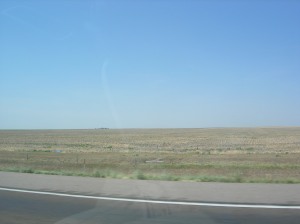
The long expanse of Kansas proved to be flatter than a pancake, with the largest fields of wheat and corn I have ever seen. It felt like an alien landscape, with a mile of corn suddenly giving way to gray dirt and clumps of yellow grass as suddenly as if a wall had been built to separate the two. The highest objects in sight for hours were the plastic signs advertising fast food joints and gas stations. Occasionally a stream would meander over the land, and an oasis of green followed the track of the water. When there was variation in the topography the road would occasionally dip into a cut in the soil, revealing red and white striations of earth layered like a cake beneath dry grass icing. Our own oasis was provided by a set of tapes recorded in 1992 of Robert McDermott, who gave a lecture series on spiritual masters while he was president of the California Institute of Integral Studies. We heard the first three of those lectures, on Martin Buber, C.G. Jung, and Simone Weil.
After leaving behind us the Oz Winery, a massive wind farm of white turbines, and the Quivira National Wildlife Refuge, we entered the tiny town of Hays and knew we needed to stop for lunch. It was 106°. As Matt put it, it felt like a breeze blowing straight out of Hell. It was not hard to believe the large billboard we had seen earlier that stated “Hell Is Real.” Hell is the havoc we have wrecked on the climate that is producing this massive drought and soaring temperatures. The small oil wells we had seen along the roadside, pumping oil up out of the barren fields, seemed like some kind of a mockery of the weather.
As we entered Hays I could not help but wonder what life was like in this small town. What is the primary form of income? What makes people happy? What do they dream about? To our delight we found a local brewery called Gella’s Liquid Bread, and were able to sample their award-winning oatmeal stout and American wheat ale with our afternoon meal. Here certainly was one expression of creativity in the town of Hays.
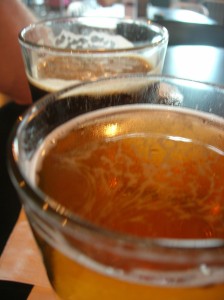
Hours after lunch was digested we crossed the chalky Colorado border. Feral sunflowers grew by the sides of the highway. Black calves followed their mothers through fields. Train tracks led to nowhere. Small houses from a bygone era stood alone, each with their own forgotten history. Who had once settled this piece of land in the name of freedom, so many decades ago? Still the land was flat.
Then, in the far western distance, clouds began to gather. A deep azure shadow blurred the once clear edge of the horizon. Rays of sunlight cut through the clouds to illuminate the land. Planes trafficked the air, criss-crossing the skies. Denver. A city, trees, hills, mountains, then thunderheads, each layered against the next. In a matter of minutes the plains were a mere memory.
I can barely begin to describe the feeling of ascending into the Rocky Mountains after hours upon hours and miles upon miles of flat grassland. It is like drinking in the sweetest draughts of color and texture, light and shadow, like paintings unfolding beneath the artist’s wrist of the Divine. The rapid incline was accompanied by flourishing conifers and carved red boulders. The foothills grow into mountains like seedlings into trees, children into adults. These ancient mountains are decaying; after millennia of shooting skyward with the pressure of tectonic upheaval, they now are slowly crumbling, their peaks rounding and smoothing under the centuries of rain and snowfall. Yet still they are great majesties.
It began to rain. Sunlight seared through the falling water creating a world of white and platinum, the road and trees cast silver in the shifting light. A tumbling river tore through the rock on the left of the road, sparkling in the sun’s rays. Then, without warning, we left the shadow of the rainstorm and entered a dry realm higher still. Red barns and soft meadows, indigo lakes and laughing streams. We crested over a pass between the mountains, then descended into a wide grassy plain, the High Plains filled with horses and foals, likely an ancient lakebed drained long ago. I saw a highland cow, a red, long haired, horned creature I had only ever seen in the Scottish Highlands. Yet here one was in the Rockies. We were taking an alternate route, along highway 285, because there was a sink hole in the usual road to Aspen on 24. Though it was 25 miles longer, we would never have encountered the High Plains if we had gone the normal route.

After the plains we passed the town of Buena Vista, and saw several signs protesting a Colorado Springs plan to dam this valley for a reservoir. It was hard to imagine these canyons and valleys sunk below placid waves, a lake that would most likely surrender to silt build-up in less than a century. Our route turned on to 82, and we circled a still, blue lake, reflecting the high peaks in exact mirror image. The road climbed ever higher, making sharp turns on the mountain’s face, leaving the bottoms of my feet with that hollow tickle that accompanies a slight fear of heights. The evening sun rises and sets constantly in the mountains as new views open beyond each passing peak. Yet at last it set for good, and our road became ever dimmer.
Finally, no more mountains obstructed our view and we rose above the world at Independence Pass. We stepped into the crystal air at 12,095 feet. Immediately we were short of breath as we walked about a glass pool reflecting the dusk sky, the tundra foliage bedecked in miniscule wildflowers. The descent into Aspen grew ever darker, and the road twisted and turned beneath overhanging rocks and aspen branches. Moths flew continuously into our headlights. Then, out of nowhere, a pale brown bunny leapt into our path, so close to the car there was literally no way to avoid it. We hit it instantly and I prayed it had died quickly. I cried all the way into Aspen. There was literally nothing we could have done, yet I could find no way to justify it. I have seen many things on this trip that humanity cannot justify, and this one act I felt so personally.

Rarely have I felt the kind of exhaustion we both felt upon arrival in Matt’s aunt’s beautiful home, decorated with exquisite relics from her world travels. We ate peaches and cherries, a sweet relief from American road trip food. I long to go on the kinds of adventures that I see captured as memories in every part of this house. But for now, my only adventure will be into the dreamworld of sleep.
